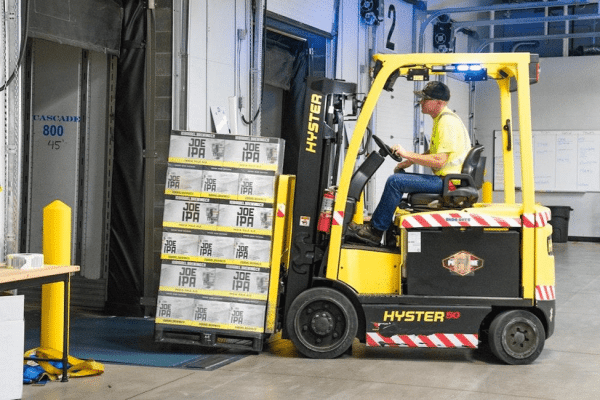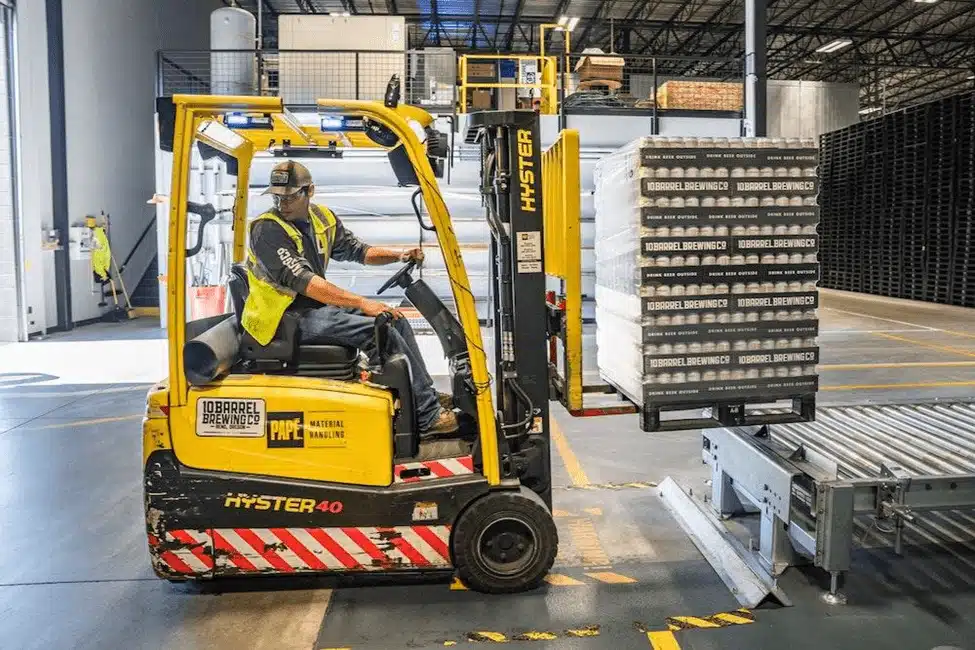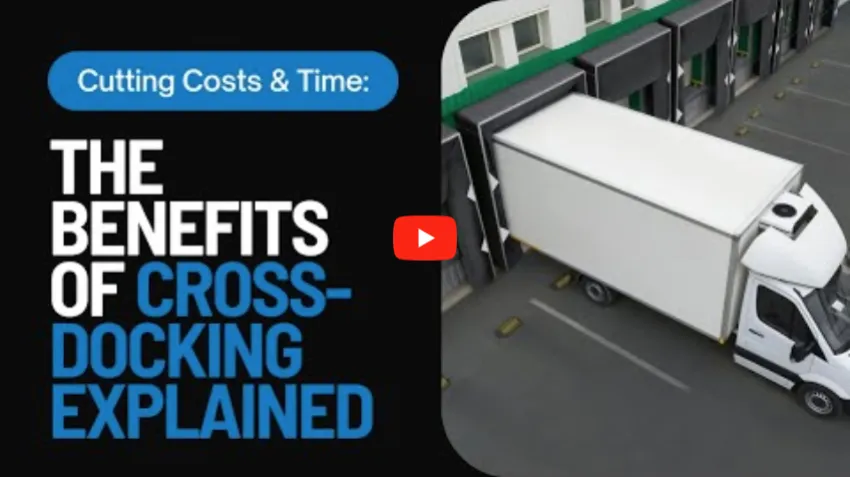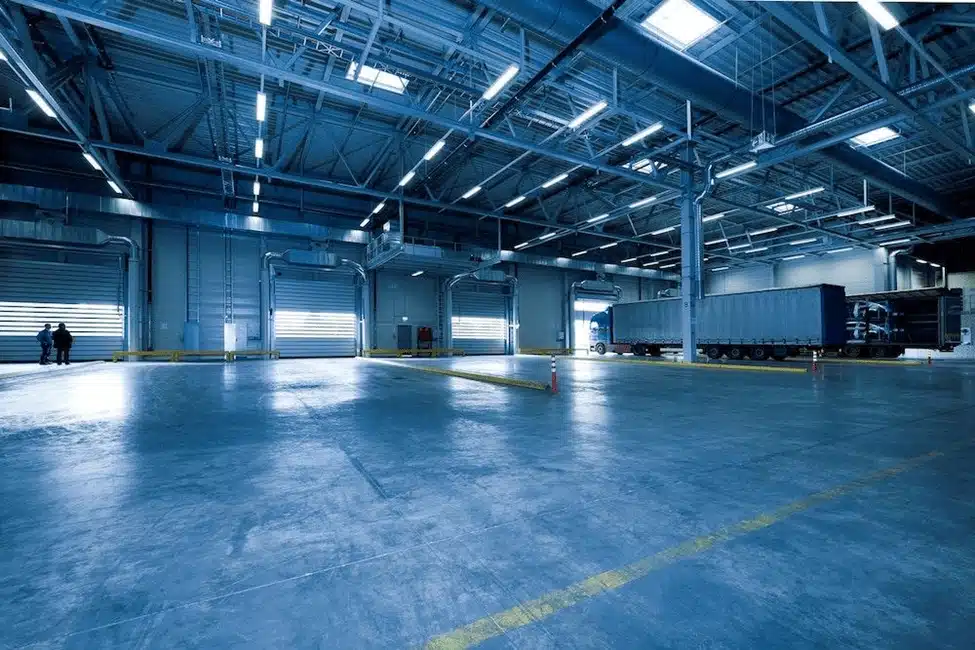
If you’re running a warehouse or distribution center, then you know that efficiency is key. Every minute counts when it comes to getting products out the door and onto store shelves. That’s why many warehouses are turning to cross docking as a way to improve their operations.
In this article, we will discuss what warehouse cross docking is and how it can benefit your business. We’ll also take a look at some of the pros and cons of using this shipping method. Furthermore, we’ll provide some tips and best practices for implementing cross docking with the help of Logimax WMS software.
What is Warehouse Cross Docking?
Cross docking is a shipping method in which products are unloaded from inbound trucks and loaded directly onto outbound trucks, without being stored in the warehouse.
This can help to save time and improve efficiency, since in cross docking warehouses, there is no need to put away incoming shipments or pick and pack orders for outgoing shipments.
When is Cross Docking Used?
Cross docking is most commonly used for products that have a short shelf life or are time-sensitive. This includes items such as fresh produce, flowers, and medications. It can also be used for high-demand products that need to be shipped out as soon as they arrive in the warehouse.
What is a Cross Docking Warehouse?
A cross docking warehouse is a type of facility where inbound and outbound shipments are exchanged, or “cross docked.” This exchange takes place without the need to store products in the warehouse. Even though items aren’t being stored, you will still need an enclosed facility with a loading dock to safely cross dock the goods.
What Type of Companies Can Benefit From a Cross Docking System?
Cross docking can be beneficial for a variety of companies across the supply chain, including:
- Captive warehouses (company-owned or private)
- Third-party logistics (3PL) providers
- Distribution centers (DCs)
If your company falls into one of these categories, then cross docking may be a good option for you. However, it’s important to keep in mind that this shipping method may not be right for every situation.
Benefits of Cross Docking: More Than Cost Savings
There are many advantages of cross docking in supply chain management and warehousing, including:
- Improved efficiency: By eliminating the need to store and then retrieve products, cross docking can help to improve your overall warehouse operations. This can lead to shorter shipping times and lower costs.
- Increased accuracy: When products are not stored in the warehouse, there is less chance for them to be misplaced or damaged. This can lead to increased accuracy and fewer mistakes.
- Faster turnaround time: By eliminating the need to store products in the warehouse, cross docking can help to reduce the overall turnaround time for orders. This is because products can be loaded directly onto outbound trucks as soon as they arrive, without having to wait for them to be picked and packed.
- Reduced labor requirements: If you are not storing products in the warehouse, you will need fewer workers to perform tasks such as receiving, put-away, and picking. This can lead to significant labor savings.
- Improved inventory management: Cross docking can help you to better manage your inventory levels, as you will always know what products are coming in and going out of the warehouse. This can help you to avoid stock-outs and overages.
Potential Drawbacks of Cross Docking:
Cross docking can be a great way to improve your warehouse operations. However, there are some potential drawbacks to using this shipping method. These include:
- Limited product storage: If you are not storing products in the warehouse, you will have limited storage space for seasonal or overstock items. This could lead to higher inventory costs.
- Increased shipping and transportation costs: Cross docking can sometimes result in increased shipping costs, as you may need to use more trucks or ship products more frequently.
- Requires coordination: A cross dock strategy requires close coordination between the warehouse and the trucking company. If there is a delay in receiving shipments or an issue with the trucking company, it can impact your warehouse operations.
How to Implement a Cross Docking Strategy in Your Warehouse
If you’ve decided that cross docking is the right shipping method for your warehouse, there are a few things you need to do to get started.
First, you will need to develop a cross docking plan. This should include detailed instructions on how products will flow through the warehouse.
Next, you will need to train your employees on the new procedures. This is important to ensure that everyone understands their roles and responsibilities.
Finally, you will need to implement a tracking system to monitor shipments and ensure that products are being moved through the warehouse efficiently.
How a WMS Can Help With Cross Docking
A good warehouse management system (WMS) such as Logimax WMS for 3PL and Distribution can help to improve the efficiency of your cross docking operations. Logimax WMS together with our Cross Docking Module can be used to track inbound and outbound shipments, schedule dock doors, and route products to the appropriate locations.
By using Logimax WMS, businesses can reduce lead times and create satisfied customers.
Expanded Tips for Setting Up a Cross Docking Operation
There are many factors to consider when setting up a cross docking operation. Here are some of the steps to take into account:
- Determine what type of cross dock operation you need: inbound, outbound, or both.
- Identify your suppliers and customers and their shipping schedules.
- Identify the products that will be handled by the cross dock operation.
- Calculate the number of docks you will need based on the volume of shipments.
- Designate a receiving area for inbound shipments and a shipping area for outbound shipments.
- Develop a plan for how products will move through the warehouse.
- Develop processes and procedures for receiving, shipping, and handling damaged goods.
- Train your employees on the new procedures.
- Create a tracking system to monitor shipments and transport vehicles to ensure efficient operations.
- Determine the receiving and shipping schedules for each product.
- Implement quality control measures to ensure accuracy and efficiency.
By following these tips, you can set up a cross docking operation that will help your warehouse run more efficiently.
Cross Docking Best Practices
Here are a few reminders of best practices if you’re considering using cross docking in your warehouse:
- Plan ahead: Cross docking requires careful planning and coordination. You will need to know what products are arriving and when they are scheduled to arrive. This information should be communicated to your outbound shipping team so that they can be prepared.
- Stay organized: Cross docking can be a complex process, so it’s important to stay organized. Keep track of incoming and outgoing shipments, and make sure that all orders are processed in a timely manner.
- Communicate with your team: This strategy requires close communication between the inbound and outbound shipping teams. Make sure that everyone is on the same page and knows what needs to be done.

Conclusion
Cross docking is growing in popularity as a shipping method that can increase warehouse and supply chain efficiency. By carefully planning and coordinating shipments, you can reduce lead times and improve customer satisfaction.
Keep in mind, for a successful cross docking operation, a good warehouse management system is essential.
Logimax WMS is a comprehensive software solution that helps businesses streamline their warehouse and distribution operations. Our software is designed to increase efficiency, improve accuracy, and reduce costs. For more information about Logimax WMS, please visit our website or contact us today.
FAQs
Is a Cross Dock Warehouse Set Up Different Than a Normal Warehouse Facility?
Yes, a cross dock warehouse is typically set up differently than a traditional warehousing facility. The main difference is that cross dock warehouses are designed to have products come in and ship out on the same day or within a very short time frame. This means that there is no need to store products in the warehouse for any length of time.
How Does Cross Docking Reduce Storage and Handling Costs?
Cross docking reduces storage and handling costs by eliminating the need to store products in the warehouse for any length of time. This means that products only spend a minimal amount of time in the warehouse, which reduces the need for extra warehouse space and labor. It also eliminates the need to handle products multiple times, which further reduces labor costs.
What Industries Use Cross Docking?
Warehouse cross docking is used in a variety of industries including retail, manufacturing, logistics, and distribution.
Explain How Cross Docking Works
Cross docking typically involves three parties: the supplier, the customer, and the warehouse. The supplier ships products to the warehouse, where they are sorted and then shipped to the customer. The products never enter into inventory or are stored like in traditional warehousing.
What is the difference Between Cross Docking and Transit Storage?
The main difference between cross docking and transit storage is that cross docking involves the sorting and shipping of products on the same day or within a very short time frame.
Transit storage, on the other hand, involves storing products in a warehouse for an extended period of time.
What Are Some Advantages of Cross Docking in Supply Chain Management?
There are many advantages of cross docking in supply chain management. It can help improve inventory management and reduce lead times and storage & handling costs. Cross docking can also improve customer satisfaction by reducing the shipping time within the supply chain.






